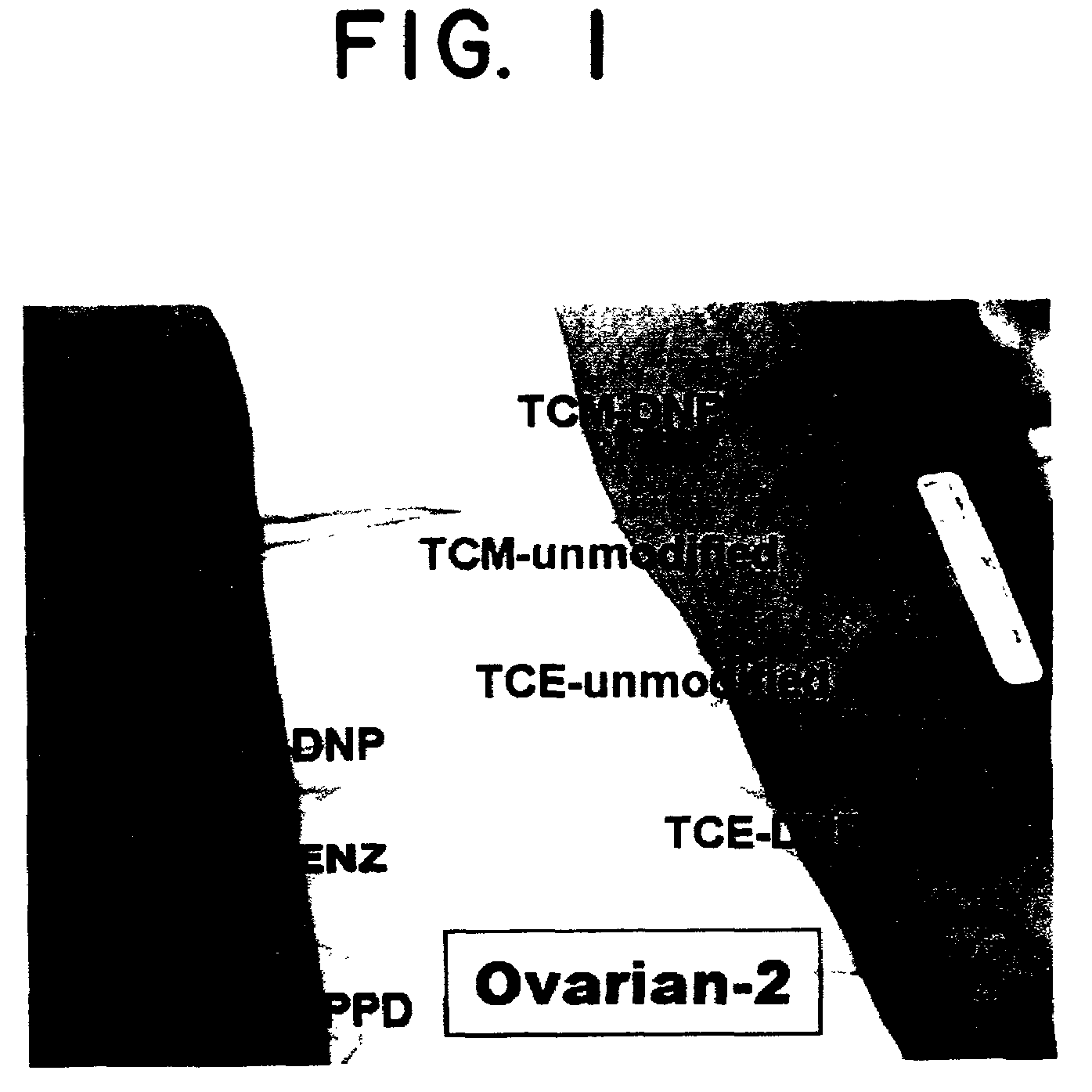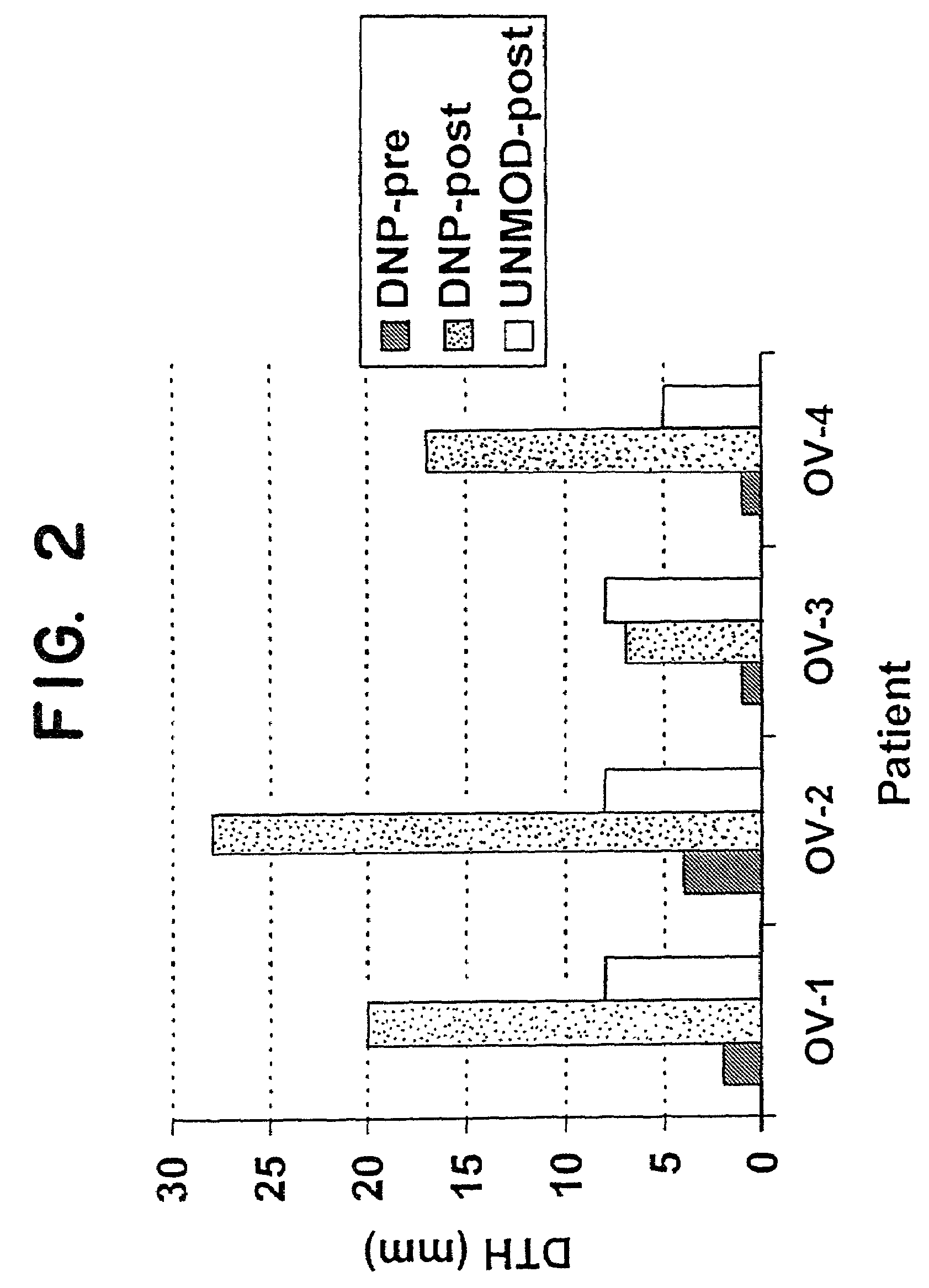Composition and method of using carcinoma tumor cells
a technology of tumor cells and tumor cells, applied in the field of composition and method of using tumor cells, can solve the problems of limited approach, limited anti-tumor effects of this immunotherapy regimen, and ineffective therapy
- Summary
- Abstract
- Description
- Claims
- Application Information
AI Technical Summary
Benefits of technology
Problems solved by technology
Method used
Image
Examples
example 1
Ovarian Carcinoma
[0052]Patients with stage III disease constitute an ideal study system for active immunotherapy, because: 1) Large amounts of tumor tissue can be obtained at the time of debulking surgery; 2) Combination chemotherapy (e.g., carboplatin+taxol) can further reduce the tumor burden; 3) Following chemotherapy, patients are clinically tumor-free with excellent performance status; and 4) Most of these patients (up to 80%) develop recurrence and die, which underscores the need for an adjunctive therapy, such as a vaccine. Following suboptimal surgical debulking and chemotherapy, the median times to tumor recurrence and death are 18 months and 37 months, respectively.
[0053]Some evidence has accumulated that human ovarian carcinoma may be immunogenic and a suitable target for immunotherapy. T lymphocytes obtained from malignant ascitic fluid can specifically lyse ovarian carcinoma cells (Ferrini et al.; Vaccarello et al.). Ovarian cancer-associated antigens have been identifi...
example 2
Advanced Ovarian Carcinoma
[0091]The objectives of the study are to treat patients with advanced adenocarcinoma of the ovary with autologous tumor cells modified with the hapten, DNP, and to determine whether patients develop delayed-type hypersensitivity (DTH) to autologous carcinoma cells, and to assess toxicity.
[0092]Patients with metastatic adenocarcinoma of the ovary (stage III or IV) who cannot be cured surgically and who have failed or ceased to respond to conventional chemotherapy, but who have good performance status, will be the study subjects. All patients must have received standard first-line chemotherapy (usually taxol and cisplatin or carboplatin). Also, patients must have failed to respond (or ceased to respond) to one or two second-line chemotherapies. After clinical and immunological evaluation, they will receive a six week course of treatment with a vaccine consisting of autologous, irradiated carcinoma cells modified with the hapten, dinitrophenyl (DNP). Low dose ...
example 3
[0131]There is circumstantial evidence that AML may be immunogenic in view of the prior experience with AML vaccine using suboptimal techniques. The use of autologous, DNP-modified vaccine has proved successful in melanoma patients with a low tumor burden. Thus, it seems reasonable to use this approach in patients with AML in remission.
[0132]The objectives of this study are to determine if the treatment of patients with acute myelogenous leukemia in first or second remission with an autologous DNPmodified leukemia cell vaccine causes 1) significant toxicity, or 2) development of cellmediated immunity to autologous leukemic cells. The study will also measure the duration of remission and survival in these patients.
[0133]This is a phase I-II trial to assess toxicity and measure immunological effects. The study subjects will be patients who are in complete remission of acute myelogenous leukemia (AML) (either first or second remission). After induction into remission with standard chem...
PUM
| Property | Measurement | Unit |
|---|---|---|
| Fraction | aaaaa | aaaaa |
| Angle | aaaaa | aaaaa |
Abstract
Description
Claims
Application Information
 Login to view more
Login to view more - R&D Engineer
- R&D Manager
- IP Professional
- Industry Leading Data Capabilities
- Powerful AI technology
- Patent DNA Extraction
Browse by: Latest US Patents, China's latest patents, Technical Efficacy Thesaurus, Application Domain, Technology Topic.
© 2024 PatSnap. All rights reserved.Legal|Privacy policy|Modern Slavery Act Transparency Statement|Sitemap


